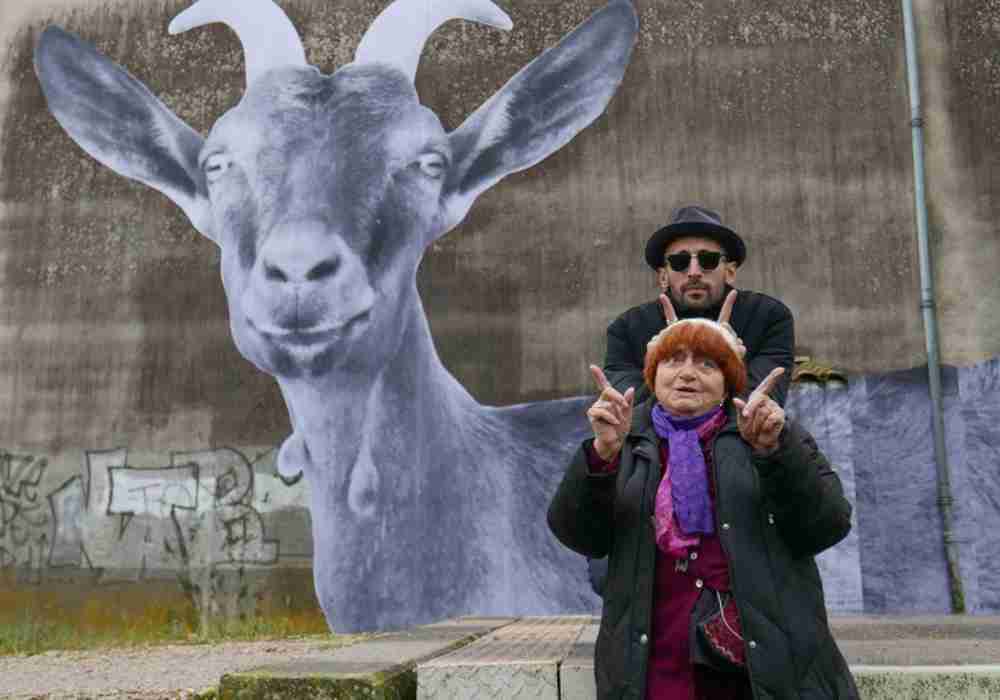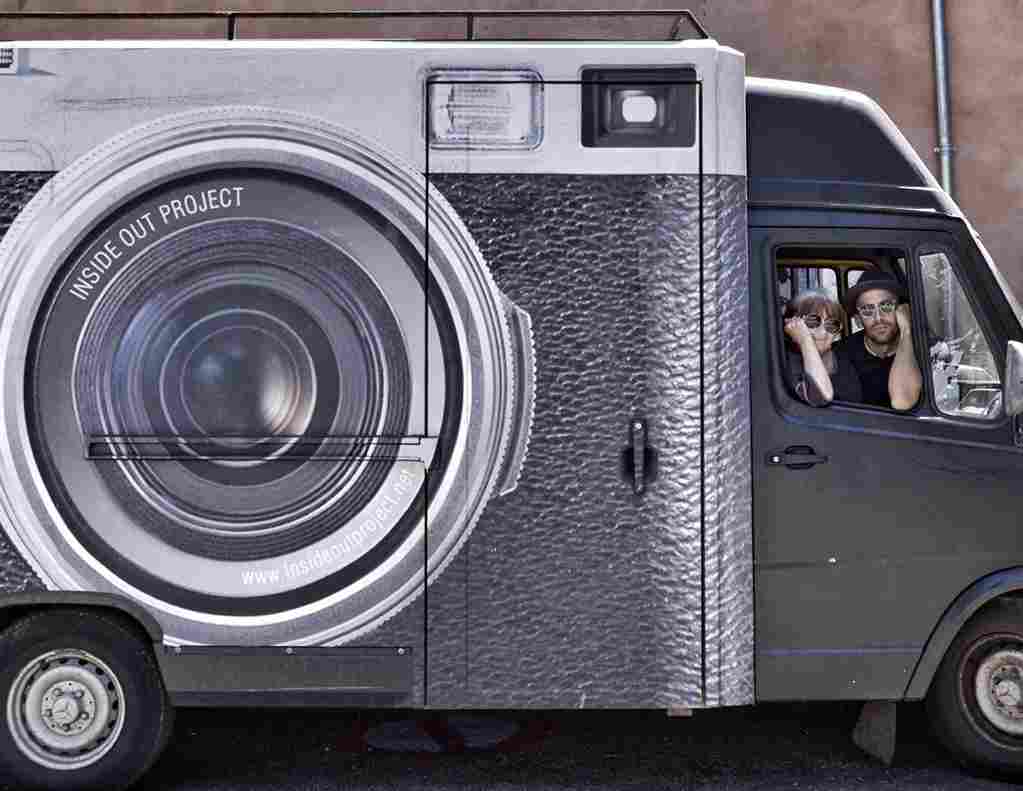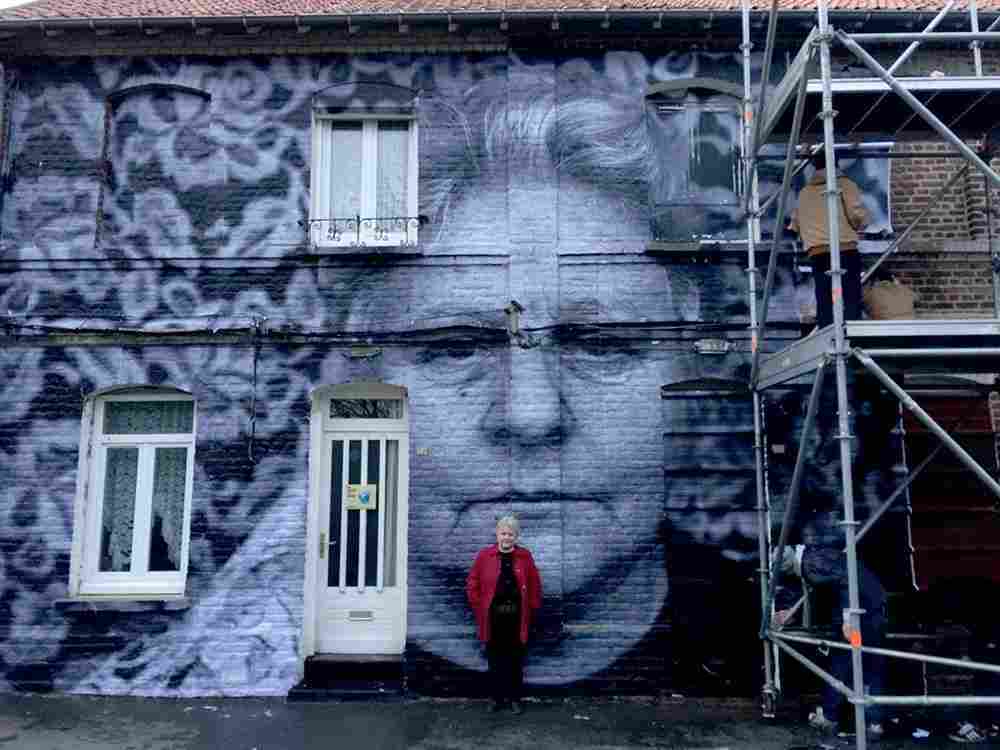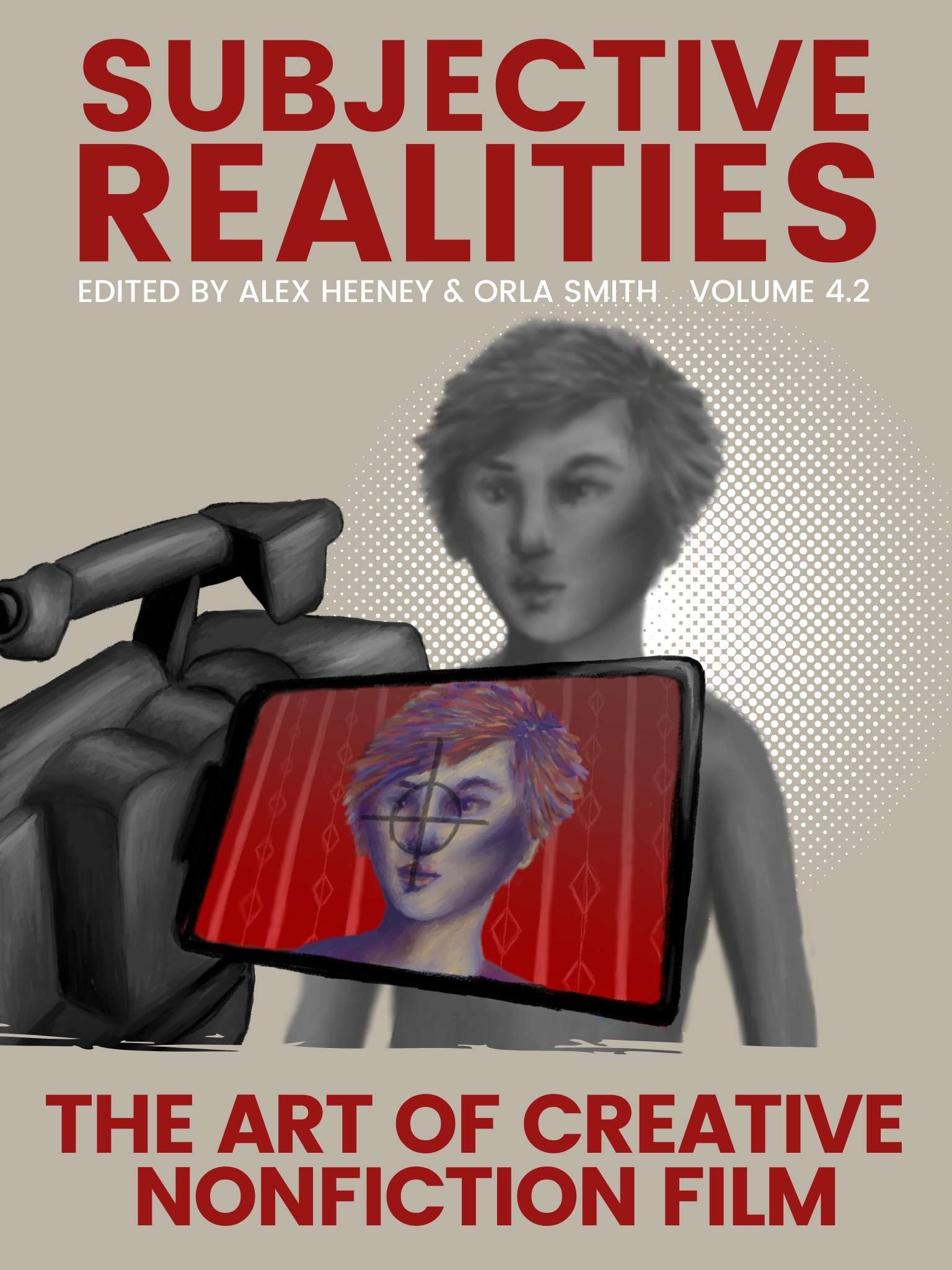In her new documentary, Faces Places, French New Wave director Agnès Varda interrogates the boundary between the internet and real life — an interest that is reflected in Varda’s personal Instagram.

Since I began following 89-year-old Agnès Varda on Instagram, my commute has felt shorter. I wait for her posts of antagonistic hippos to load between subway stops; I attempt to translate her punny French captions. Instagram aesthetics come naturally to Varda, whose films have explored the politics of personal documentary and image-making for over six decades. Her feed, which feels impromptu and quotidian, is also a real-time extension of her oeuvre. It is as subtly disorienting as her films.
[clickToTweet tweet=”‘Since I began following 89-year-old Agnès Varda on Instagram, my commute has felt shorter.'” quote=”‘Since I began following 89-year-old Agnès Varda on Instagram, my commute has felt shorter.'”]
Many of Varda’s recent posts feature scenes from the making of her new personal documentary, Faces Places, in which she drives through the French countryside with JR, a 33-year-old visual artist, collaborating on his “Inside Out” project. Wherever they go, Varda and JR take photos of townspeople and paste the resulting images onto buildings, bunkers, and water towers. These murals spotlight the life and work of the French working class. At the same time, they are the latest incarnation of Varda’s meta-cinematic impulses, her desire to muddy the waters between art and reality.
Years before the advent of Instagram, Varda was already devoted to collecting and preserving images from her daily life. In The Gleaners and I (2000), her first digital film, “gleaning” refers not only to salvaging produce after a harvest but also to other kinds of collecting: fishermen look for oysters, dumpster divers scavenge for lunch, and artists make sculptures. Varda, meanwhile, culls her surroundings for images and stories. In an early scene, she poses as an agricultural gleaner before trading ears of wheat for a handheld digital camera. The impulse to collect, she suggests, is what you might call “human nature”— digitization is merely a new means to an old end.
[clickToTweet tweet=”‘Instagram aesthetics come naturally to Varda, whose films have explored the politics of personal documentary and image-making for over six decades.'” quote=”‘Instagram aesthetics come naturally to Varda, whose films have explored the politics of personal documentary and image-making for over six decades.'”]
Faces Places picks up where The Gleaners and I left off, exploring the extent to which online image-sharing is now our default means of gleaning and sharing memories. JR and Varda’s roadtrip — in a photobooth-equipped van decorated with a giant camera — pokes fun at the way many of us move through the world, piecing together personal documentaries within the formal constraints of Instagram, Facebook, and Snapchat. During the mural-making process, the built environment can be interpreted as a stand-in for the Internet, another commons upon which we project images and build personas. To follow Varda through France is to consider our desire to enact our identities online.

JR and Varda make murals for the same reasons millions of people (presumably) use Instagram: to freeze time and pay homage. In a post-industrial mining town in northern France, we encounter a crew of unemployed miners and Jeanine, the last inhabitant of a row of soon-to-be-demolished houses. Theirs is a world on the cusp of vanishing — but JR and Varda use their cameras to direct public awareness to Jeanine’s story. The co-directors paste a colossal close-up of Jeanine’s face onto the façade of her home. Unlike photos taken and shared on iPhones, the mural’s power derives from its enormous scale. Jeanine becomes a fixture of the landscape from which she stands to be exiled.
[clickToTweet tweet=”‘JR and Varda make murals for the same reasons millions of people (presumably) use Instagram: to freeze time and pay homage.'” quote=”‘JR and Varda make murals for the same reasons millions of people (presumably) use Instagram: to freeze time and pay homage.'”]
At a time when so much of our lives seems to be “located” online, Faces Places highlights the ways in which identity remains site-specific, tethered to a particular place and time. For Jeanine, her house is a repository of history. As she tells the camera, “They won’t kick me out. I have too many memories here.” Jeanine’s portrait depends on the idiosyncrasies of its environment: a white door protrudes into her cheek, and the building’s molding cuts across her forehead. The mural exposes exactly what Jeanine is poised to lose — not only her home, but also the way she is seen by her community and the way she sees herself.
Throughout the film, JR and Varda juxtapose the materiality of mural-making with an image’s digital traces. JR’s process — which entails location scouting, measuring, printing, pasting, and climbing around on scaffolds — is a live spectacle. It draws people into the street for in-person conversations. Teenagers, however, seem attracted to the mural primarily as digital fodder. They gather at the base of JR’s scaffold and pose for a selfie. While digitization makes J.R.’s work more permanent and accessible, it also subverts the mural’s site-specific logic. Even when Jeanine’s house is decimated, her image will live on, stripped of narrative context and splattered across the Internet.
[clickToTweet tweet=”‘Even when Jeanine’s house is decimated, her image will live on, stripped of narrative context and splattered across the Internet.'” quote=”‘Even when Jeanine’s house is decimated, her image will live on, stripped of narrative context and splattered across the Internet.'”]
Of course, Faces Places only exists because JR and Varda see the value of experiencing these murals remotely. In the South of France, we meet a brother and sister who are elated to have a photo of their ancestors pasted onto their family home. When the mural is completed, they take a selfie. “We’ll post it on social media tonight,” the man proclaims, as if posting online is the only way to certify a memory. The film does not belittle this line of thinking. Instead, Varda admits to having adopted a version of it herself. At a beach in Normandy, where she once took a picture of the late photographer Guy Bourdin, Varda says, “I remember my pictures of him better than I remember him.” Now, with the advent of Instagram and Facebook, we all share in the pleasure of muddling art and life.
[clickToTweet tweet=”“I remember my pictures of him better than I remember him.”” quote=”“I remember my pictures of him better than I remember him.””]
Given these perplexities, Faces Places encourages us to be more critical adopters of new technologies — from industrial farming equipment to the latest social media app. Early in the film, Varda and JR meet a farmer who purports to “love innovation” for the superhuman powers it grants him — namely, the capacity to harvest 2,000 acres without hiring a single hand. After the farmer lists the devices he uses to tend the fields, the film cuts to an almost cartoonish scene on a riverbank, in which JR and Varda sit with their backs to the camera, discussing the social and emotional value of such innovations. With greater efficiency, they note, comes isolation; we are social creatures who need more than what iPhones and tractors so far provide us.

Without being pedantic, Varda and JR’s conversation urges us to start our own. The film offers us a role model in this regard: an anonymous goat farmer who resists commercial pressure to burn off her charges’ horns. Her adoption of new equipment is selective and deliberate. “We used to [use milking machines],” she explains, “Mechanical ones, electric ones, but actually, the noise of the machines and all the hassle of cleaning them made it not worth it. We came to realize milking is such a peaceful moment.” Like Varda and JR, the farmer is no luddite. Instead, she questions the devices at her disposal. When she has good reason to repudiate a technology, she does so.
We’ve talked to many directors over the years who stand beside Varda as some of the greatest documentary filmmakers of our time. Buy our Documentary Masters Vol. 1 eBook for just $6.99, and learn from greats such as Frederick Wiseman, Joshua Oppenheimer, and Gianfranco Rosi.
Faces Places trains us to interrogate digital content as we would a fictional narrative. Like so much of Instagram, the film appears unplanned and casual (see Varda and JR’s rendition of Anita Ward’s “Ring My Bell”). But Varda and JR draw our attention to the staging of such spontaneity. In the first scene, we watch the co-directors just-miss each other at a bus stop, in a bakery, and on a dance floor, as a voiceover describes these almost-encounters. These first lines are deliberately stilted to signal the film is, at least partly, scripted. Later, when JR and Varda interview a passer by about a goat mural, the camera crew and filming equipment are visible in the frame. In these instances, the film admits both its technological scaffolding and status as artifice.
[clickToTweet tweet=”‘Like so much of Instagram, FACES PLACES appears unplanned and casual. But Varda and JR draw our attention to the staging of such spontaneity.'” quote=”‘Like so much of Instagram, FACES PLACES appears unplanned and casual. But Varda and JR draw our attention to the staging of such spontaneity.'”]
Likewise, on her Instagram, Varda does not pull the wool over our eyes. She sensitizes us to the strange “filter” of her medium, demanding we de-code rather than credulously follow her online. In one especially layered post, she stands in profile before a blurry Faces Places poster, which features Varda and JR walking in front of a freight train covered in a photograph of Varda’s eye. The director’s image appears three times in the picture, exploding any notion of one-to-one correspondence between Varda’s online persona and her actual self. Meanwhile, Varda’s enormous mural-eye, omniscient yet blurry, watches us parse the images of images. We struggle to assign meaning.
[clickToTweet tweet=”‘There is something inevitably endearing about octogenarian Instagrammers, but I treasure Agnès Varda’s feed for more than its adorableness.'” quote=”‘There is something inevitably endearing about octogenarian Instagrammers, but I treasure Agnès Varda’s feed for more than its adorableness.'”]
There is something inevitably endearing about octogenarian Instagrammers, but I treasure Varda’s feed for more than its adorableness. Almost offhandedly, her posts throw a wrench in my rote swiping and remind me of the Internet’s weird novelty, even as they tempt me further into its depths. With Faces Places, Varda directs our attention to our proliferating, kaleidoscopic digital culture. It would be simpler if she wanted us to put down our screens; instead, we are asked to think about them.


